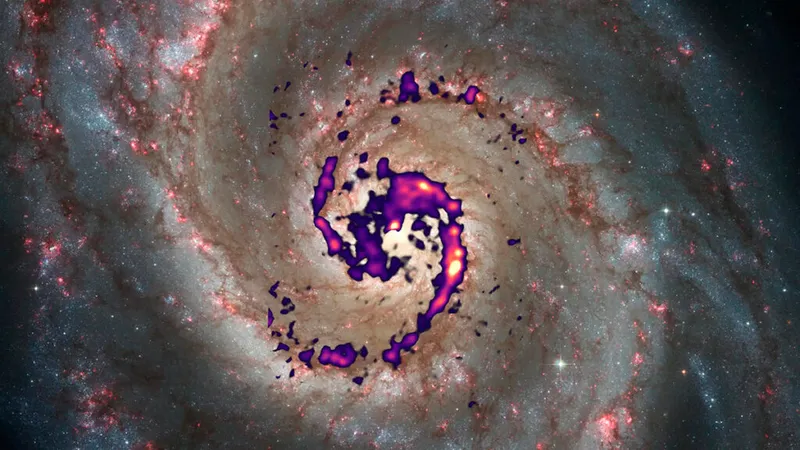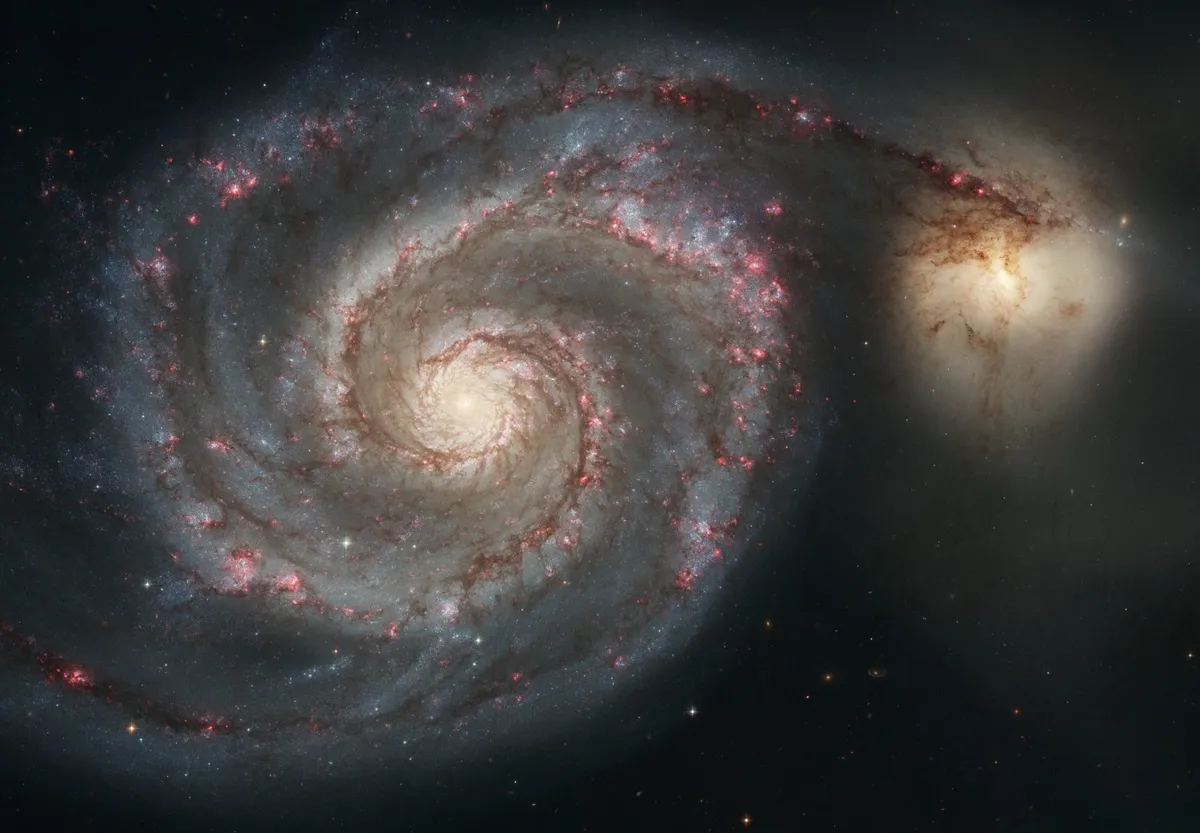Knowledge of star formation in the Whirlpool Galaxy, M51, has taken a leap forward via a new study looking at the famous spiral galaxy.
Astronomers have mapped the cold, dense gas that will one day become stellar nurseries in the Whirlpool Galaxy.
This is the first time such an extensive map has been created for a galaxy beyond the Milky Way.

"To investigate the early phases of star formation, where gas gradually condenses to eventually produce stars, we must first identify these regions," says Sophia Stuber from the Max Planck Institute for Astronomy, who led the study.
"We typically measure the radiation emitted by specific molecules that are particularly abundant in these extremely cold and dense zones.'
In order to map future star formation in the Whirlpool Galaxy, the team spent over 200 hours observing the nitrogen- and hydrogen-bearing molecules hydrogen cyanide and diazenylium in the galaxy using the Northern Extended Millimetre Array in the French Alps.

Though further away than similar clouds in our own Galaxy, the Whirlpool Galaxy provides a much better view as we are seeing them straight-on.
This allows astronomers to easily trace the structure of gas clouds along the arms and centre of the galaxy.
"Although we can learn a lot from the detailed observation programme with the Whirlpool Galaxy, it is, in a sense, a pilot project," Stuber points out.
"We would love to explore more galaxies in this way in the future."
